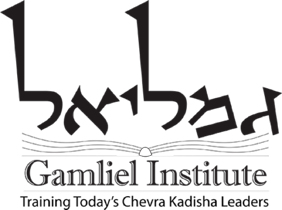Rabbi Sidney Applbaum died on Friday afternoon, June 18, 2010 in New Brunswick, New Jersey. He is survived by his wife of 25 years, Carol Stone Applbaum, his four children, Yaakov Nisan, Alisa Weinrib, Isaac (Yitz) and Kalman, and ten grandchildren, his two stepsons, Elihu and Maurice Stone, and six step-grandchildren. He was buried in Eretz Hachaim, Beit Shemesh, Israel. Shiva is at 11 Mount Court, East Brunswick, NJ Tuesday June 22 through Saturday June 26.
For over 35 years, Rabbi Sidney Applbaum worked to persuade the Orthodox world and Jewish funeral directors to take seriously Jewish traditions around death and dying. More than any other single individual, Rabbi Sidney Applbaum elevated the discussion of traditional Jewish funeral practice onto the North American Jewish agenda. Throughout his life, he remained consistent in his advocacy of Tahara, Tachrichim and Kevurah b’Karka and in his opposition to embalming, viewing and deviation from halacha. He strongly supported the creation and development of Chevra Kadisha groups. He brought vision and determination, knowledge and creativity, patience and insight to this holy work. Rabbi Applbaum was honored at the 3rd North American Chevra Kadisha conference in New York on June 6, 2005 for his contributions to the Chevra Kadisha movement.
Sidney Applbaum was born in 1924 in Bentleyville, Pennsylvania. When he was 7 his family moved to Williamsburg where he attended Yeshiva Torah Vodaas until he was 16. He finished high school in 2 and ½ years and then went on to Brooklyn College. At age 18 he entered the Brooklyn Rabbinical Academy Mesivta Rabbi Chayim Berlin. Rabbi Sidney Applbaum received smicha from Rabbi Hutner in 1945 at the age of 21.
For two years he held a pulpit at St. Paul Hebrew Institute in St. Paul Minnesota. In 1947 he moved back to New York, becoming the rabbi of Congregation Beth Judah in Flat Lands section of Brooklyn, where he served that congregation for 48 years, until his retirement in 1995.
In 1961 Rabbi Sidney Applbaum was hired by the Orthodox Union (OU) to staff its Funeral Standards Committee. He laid out five areas of work
-
Study current Jewish funeral practice
-
Establish a National Chevra Kadisha to direct and control all Orthodox funerals.
-
Conduct an educational campaign
-
Set up funeral chapels which accept OU direction
-
Set up a department in the OU to implement this program.
Applbaum conducted a study on “ways to combat the flagrant violations of Jewish law in funeral practices and to counter the gross exploitation of bereaved families….” The Applbaum report lists seven major findings from his study. These include lack of knowledge and straying from Jewish funeral practice and deterioration of the Chevra Kadisha. A major finding was that “arrangement and direction of the funeral has passed from the religious community, where it traditionally belongs, to the hands of professionals…. “
In June 1963 an “Accord” between the OU, Rabbinical Council of America (RCA) and Jewish Funeral Directors of America (JFDA) was published. It provided for distribution of a Jewish Funeral Guide as well as addressing tahara facilities, who should perform taharas, embalming, tachrichim pricing, and complaints. The Jewish Funeral Guide has changed little since then and is still distributed by the JFDA, until recently with Rabbi Applbaum’s name as the contact.
In 1962 Applbaum negotiated a $350 funeral contract that called for the funeral chapel to abide by ritual regulations as determined by the OU. The chapel was to pay a mashgiach, hired by the OU to supervise Shmira, tahara and other ritual practices.
In 1963 Applbaum wrote about Funeral Directors:
Although the Funeral Directors Association signed this agreement in good faith and have full intentions of observing same, it is simply within the nature of things that laxity and apathy creep in where a void is created and that if one is not constantly reminded of his obligation to a contract, there is little reason to believe that it will continue to be effective, especially so when there are other compelling interests that are not completely in keeping with the spirit of the understanding.
He was also honest about the state of the Chevra Kadisha.
There are sincere requests from numerous communities throughout the United States who already have an existent Chevrah Kadisha but are looking to know- how for the actual performance of the Taharah as well. Furthermore in the larger Jewish communities such as New York, Chicago, etc. where a Tahara is performed in the main by paid Chevra Kadisha, we are well acquainted with the fact that some of these Chevra Kadisha are not performing this religious ritual in accordance with Halacha. In most every case, the number of men or women that are used for the Tahara are not sufficient to perform the Tahara properly. Furthermore, there is much ignorance as well as violations of Halacha.
In January of 1967 the Flatbush Plan was established between the Flatbush Vaad and the Jewish Funeral Directors of America. It provided a set of procedures regarding when and how taharas would be done.
In June of 1968, a task force was established, consisting of two members of the OU, RCA and the JFDA to:
a) Study the feasibility of the implementation of Universal Tahara.
b) Work out a feasible system of registration of funeral procedures for the purpose of statistical information and to be available in cases of complaints.
c) Study the over-all administration of the program entailed by the Accord, and to make appropriate recommendations.
In April of 1969, Applbaum was designated to administer the program, under an umbrella called the Tri-Partite Committee. From 1970-1995, Applbaum continued his work as a tireless advocate for the Chevra Kadisha. Applbaum worked with local communities including Flatbush, Queens, Long Island, Chicago, Los Angeles, New Jersey, Miami Beach, Kansas City, Denver and others. His goal was always to sign an agreement mandating traditional Jewish practices.
We remember Rabbi Sidney Applbaum, his selfless work, his tenacity and his bravery. We honor his immense contribution to the Chevra Kadisha world. He is truly one of our heroes.
written by David Zinner – June 22, 2010

